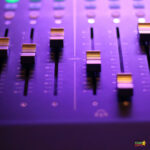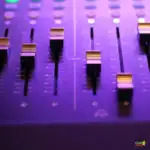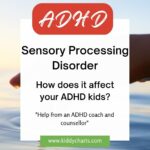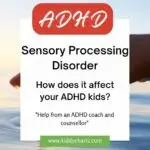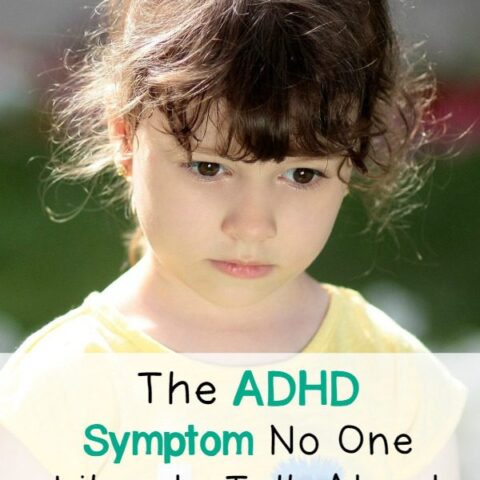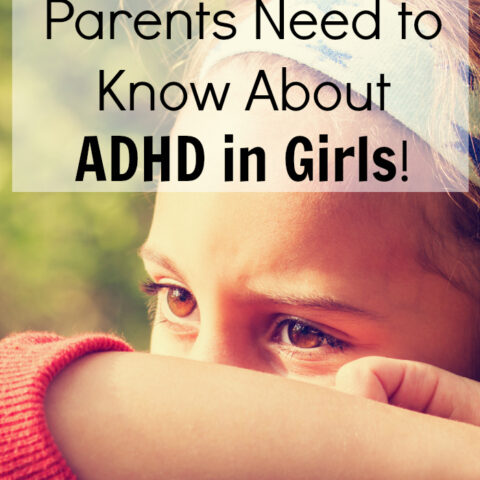There are lots of coexisting conditions that run alongside ADHD. These are called co-morbidities. We have covered ADHD comorbidity in another article on the site if you would like more information. We have another article from Sarah Templeton (from Headstuff ADHD Therapy) today talking about ADHD and sensory issues. It is worth noting that Sensory Processing Disorder, which Sarah is talking about, is not officially recognised in the UK as a standalone condition, as it isn’t within the bible for diagnosis: Diagnostic and Statistical Manual of Mental Disorders, Fifth Edition. It is typically diagnosed alongside other conditions, such as ADHD. They say:
‘ADHD is a big umbrella and a lot comes under it’.
Something that the vast majority of people with ADHD (Attention Deficit Hyperactivity Disorder) have is called ‘sensory processing disorder’. I am diagnosed with sensory processing issues and from my research with clients and our 500 member support group, we reckon at least 8 or 9 out of 10 ADHD people also has SPD as it is known. Sensory stimuli can have a profound effect on some neurodivergent brains, including those with ADHD, Autism Spectrum Disorder – now more appropriately referred to as Autism Spectrum Conditions or ASC.
Lack of consideration around the nervous system and children that have sensory over-responsivity, or stronger sensory experiences, can lead to anxiety disorder. It can be so overwhelming for children to be trying to deal with this, and the other demands they have at school, home and in their environment.


ADHD’ people can perceive any of the senses differently to how a neurotypical person would. These senses can include taste, touch, smell, sound and any of the other senses, but some are more common than others.
Something that affects a lot of ADHD people is sound.


Ironically, for some of the noisiest people on the planet when we are at our most boisterous, we also can find some sounds incredibly annoying. Repetitive sounds like somebody tapping a pen on a table, or builders banging hammers, can literally drive somebody with SPD wild.
The ADHD brain cannot separate out or ignore the irritating noise and it becomes all consuming in their heads.
I’ve known ADHD children have huge problems with the noise at fairgrounds and circuses. I myself particularly have a problem with people who talk in cinemas and theatres. I cannot block out the sound, and all I can hear are people gossiping rather than what is going on on the screen or stage.
Irritating sound can cause quite extreme reactions in people and I think back in horror to when I hauled somebody out of their seat and screamed in their face to “shut up” once in a cinema when I was in my 20s many years before my ADHD diagnosis. I now wouldn’t dream of doing something like that in case they had a weapon on them, but at the time the irritation of them constantly talking in the cinema drove me to that very impulsive action.
So sound can be a big trigger for an ADHD child. Be particularly careful when you take an ADHD child to any noisy sort of environment; anywhere with loud noises. So large concerts, with loud music and bright lights, shopping centres, public transport, football matches, anything like that you might want to take some noise cancelling headphones with you in case the noise becomes too much for the child. Environmental factors can strongly effect sensory information and sensory stimulation for the ADHD brain and give children a hard time regulating and potentially exacerbating some of the emotional regulation symptoms of ADHD. It’s therefore well worth considering emotional responses in the context of the environment, and checking that sensory sensitivity isn’t at play. Noise-canceling headphones can be a godsend if children experience sound-based symptoms of SPD.
Sometimes a systematic review of a child’s sensory experiences can go a long way to helping and supporting them in school and beyond. It is worth considering that those diagnosed with oppositional defiance disorder could be experiencing sensory emotional reactions which kicks in their aggressive fight response. As always, look at the environment, and the behaviours, and work with the children to find out what is contributing to those reactions – get to the root cause if you can!
Another of the senses that give ADHD kids big sensory problems is touch


This is another area that those with ADHD can have sensory processing problems around. It is usually about clothes. ADHD kids fall into two categories. The biggest is where they are very particular about what material touches their skin. This ADHD experience is likely caused by a different in sensory systems in the ADHD brain. Most are like me and will only wear soft cotton, jersey, denim and linen type material. We don’t like wool, or anything faintly scratchy, or itchy. Mohair jumpers and woolly cardigans send shivers down my spine and certainly don’t go anywhere near my body.
There is a smaller category of ADHD kids who like their clothes to be so tight with nothing flapping, that they wear clothes years too young for them. I have met ADHD children who are seven and still walking round in pants for two-year-olds. They like everything to be incredibly tight and snug and can’t have anything flapping around their body.
School uniform can become a problem for these kids whosse sensory experience is different. I remember the elastic string under my school hat driving me potty and constantly pulling it away from my neck. So if a child insists that they really can’t wear something because it is irritating them, do believe them, because it is almost definitely true.
Doing school shirts up to the neck with a tight tie can often feel like you are being strangled, making daily tasks like this tough on the nervous system. So if a child experiences this and asks if they can keep their top button undone and their tie done up slightly looser because they feel that they are being suffocated, this is a reasonable adjustment that I strongly suggest parents and teachers allow.
Some children have an aversion to physical contact as well – for example our daughter doesn’t like to be hugged.
How do ADHD and sensory issues effect eating


Another huge sensory issue that will more than likely crop up in daily life if you have an ADHD child is around food, and food textures. The list is limitless of ADHD symptoms around food that an ADHD child may be able to tolerate and others that they won’t. I, in particular, have a problem with textures. I won’t eat nuts because they taste like wood, and I won’t eat anything wrinkly like a currant, sultana, raisin, or prune because I cannot stand anything wrinkly in my mouth. I’ve also never even tried avocado because the thought of that green slush going in my mouth makes me feel quite nauseous.
I’ve met hundreds of ADHD children with all kinds of different issues around food. There are common triggers, like texture or perhaps even strong smells, but similar symptoms are few and far between – there is a whiole gamut of sensory processing challenges around food.
Some ADHD children will only eat things that are crunchy and not soft. Some the total opposite. Some will only eat things that are very bland, and some need their food to be very hot and spicy. I’ve met numerous kids who don’t like certain food touching each other. This particularly relates to baked beans and peas! So if you have a child who is insisting that their baked beans or their peas are served separately ‘ so they don’t leak into their other food’ take them seriously.
Quite a large proportion of ADHD children also like eating with their hands. I’m not quite sure where this comes from, but it could be kids with dyspraxia as a comorbidity who find it easier to control their hands than a knife and fork. But I’ve known ADHD kids to eat everything, including the Sunday roast dinner, with their hands.
Sensory seeking in ADHD


So if your child is one of the very many with ADHD, who also has sensory processing disorder, be prepared for them to have strong reactions to smells, taste, touch and sound in particular. A lot of ADHD children also sensory seek. I hadn’t realised I did this until I remembered that if there was anything silky or velvety around, I would not be able to stop stroking it. I love the feel of the soft material and find it relaxing.
SPD is extremely common with ADHD, although I have met children who don’t have it, but they are rare. For those of us who do, just accept that for some of us, some things are possible and some are just not.
My school hat elastic string would not sit on my neck without infuriating me however many times I tried to leave it alone and during Covid wearing masks was absolute torture. I could only wear a mask if I pulled it slightly away from my face. SPD is a serious condition and causes serious problems for some kids so be aware of it, and be prepared to compromise to take this element of their ADHD into account.
Thanks as always to Sarah for this amazing insight into another aspect of ADHD. Don’t forget to check out here books:
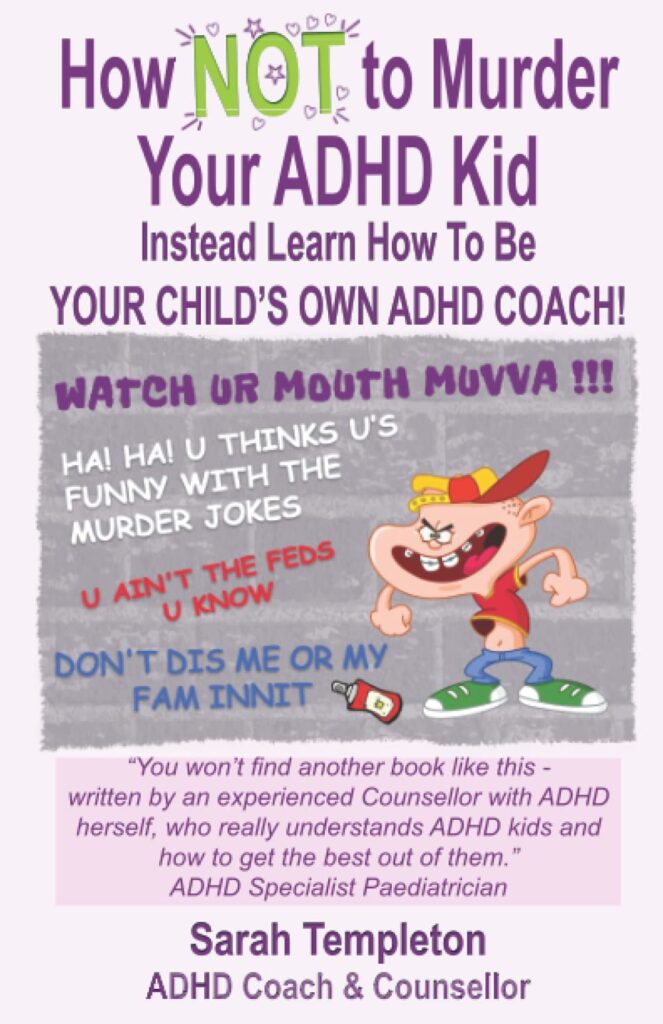
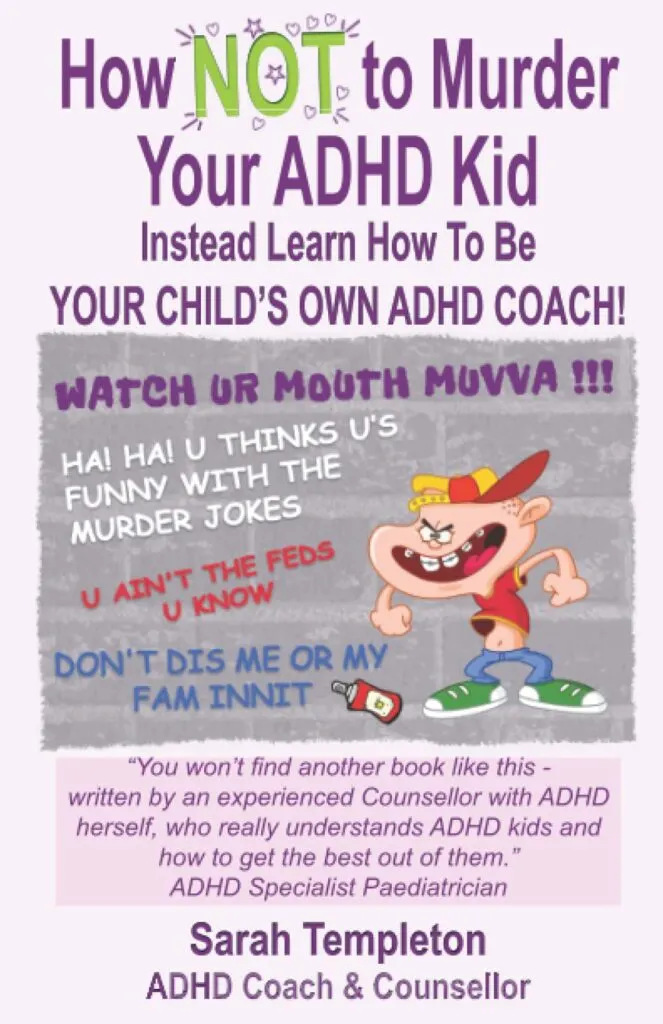
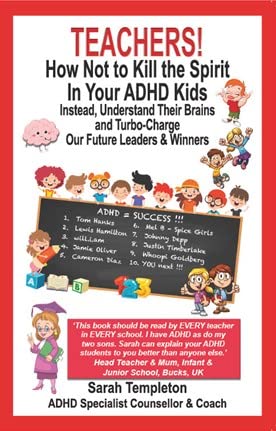
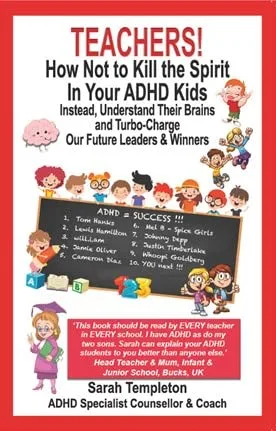
For another perspective on sensory processing in ADHD, there are a few things that personally I find difficult to cope with, and some I have had to learn to live with.
For example, snoring from my parents drove me nuts as a kid, but as I have got older, I have somehow managed to learn to cope with this through developing my own mindfulness techniques to go to sleep. I have failed to stop my dislike of hiccups, finger cracking or belching though. I often have to leave the room if this is happening. As for the pig sniffing that sometimes people do: I have been known to leave public transport because of it! 😂
Do check out some of the other articles that we have on ADHD non the site within our ADHD resources for parents and teachers section. Here are some examples for you:
Articles on ADHD from KiddyCharts Part 1
Here are the first in our series of articles to help and support parents and teachers to understand ADHD in kids
ADHD comorbidity: What co-existing conditions you might need to look out for
Our first article in the series looks at the ADHD co-existing conditions.
Emotional dysregulation in ADHD kids: What is it and how to handle it
The second article from Sarah Templeton explains what emotional dysregulation is in ADHD, and how to deal with it.
What is rejection sensitive dysphoria and how does RSD ADHD appear in kids?
The third article covering ADHD focuses on RSD, or Rejection Sensitive Dysphoria. What is it, and how does it manifest in ADHD?
ADHD medication guide: To medicate or not to medicate that is the question
Do you want to know more about ADHD medication? Then check out this handy guide from Sarah Templeton.
ADHD and procrastination: Why adults and kids do it and how to stop them?
Procrastination is a real issue with ADHD - what and why does it happen and what can you do about it.
Here are articles from other sites too:
Articles on ADHD from other sites
Here are some more articles from some other kid-related sites that also cover ADHD
Top Tips For Caring For Your Child Diagnosed With ADHD
Some tips and ideas for helping your child with ADHD.
The Surprising Link Between ADHD and Anxiety
As we have said, social anxiety is often linked to ADHD; here is another article looking at that link.
10 Things Other Parents Need to Know About ADHD in Girls
ADHD preents very differently between boys and girls. Here are some things that other parents should know about it.
If you like what you see here, why not check out our weekly newsletter as well?
If you like what you see here, why not check out our weekly newsletter as well? We are a neurodivergent run business, and have experience of counselling ADHD adults and children too. It might be worth dropping us a note too if you have any specific questions around ADHD or ASC, and we can see if we can help out at all. From teens, to toddllers, and even adults, we can support where we can. Do remember that we are not offering services as medical advice though, if there are any medical concerns that you have, do contact your child’s paediatrician for support and advice if you can.
We do understand that in many locations, there are long waiting lists, so that support is helpful while you are waiting for a professional review and opinions. If there is something specific you would like us to cover on the site, both for our resources, or just tips and help, then lt us know and we can see what we can do for you.
Thanks so much for checking this out, and we do hope we will see you again on the site in the not too distant future. We publish at least once a week, so come back soon.
Take care,Helen
Helen









